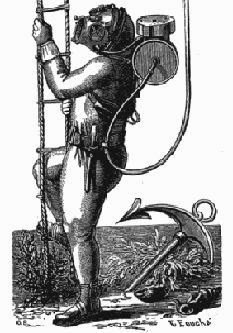
Since 1999 Richard and Judith Lang have focused their attention on just 1000 yards of tide line where they have collected plastic washing ashore on Kehoe Beach in the Point Reyes National Seashore. Although the news about plastic pollution is dire, they bring the excitement of scouting for treasures and the pleasure of the creative life to an otherwise difficult topic.
Saturday, February 27, 2010
Light in a Bottle

Wednesday, February 24, 2010
Diver Mike
Tuesday, February 23, 2010
Cassandra's House


Monday, February 15, 2010
Valentine's Day at Kehoe Beach

Wednesday, February 3, 2010
Hyperbole

The end result of hyperbole, while poetic and attention grabbing, ultimately leads to skepticism.
Our pictures from Kehoe Beach, Point Reyes National Seashore show no hyperbole is needed. The evidence is in. What washes up on this one beach is repeated everywhere on earth. This picture is from a cove at one end of “Ten Mile Beach” the eponymous strand filled from one end to the other with scenes like this. It’s heartbreaking, and a call to action. Relentless use of disposable plastic must end.
The news of plastic jetsam most igniting the public imagination is the story of the “North Pacific Gyre,” the great “Eastern Garbage Patch.” Its existence had been predicted in 1988 with a report from NOAA (the US National Oceanic and Atmospheric Agency) based on coastal findings off Japan, Alaska and Hawaii. After Charles Moore’s famous Algalita voyage in 1997, an area of plastic debris north of Hawaii was described as “an island bigger than Texas” or, “twice the size of Texas”, or “bigger than Brazil.” Images of a giant “eighth continent” filled the public’s vision—effective images, all. But the press and the blogosphere have climbed on board belying the extent of the mess. There is no Google map that shows the gyre from space, and to those who would discredit the extent of the plastic pollution—if it’s not on Google maps, it doesn’t exist. The end result of hyperbole, while poetic and attention grabbing, ultimately leads to skepticism. Plus, if the Gyre were a densely packed, visible cyclopean floating raft of plastic, it might be possible to clean it up. The reality, gleaned in the summer of 2009 from trips to the Gyre by Project Kaisei, Algalita, and Scripps Institution of Oceanography, confirm that it would be better described as a continent-sized bowl of plastic soup, a minestrone of tiny plastic bits. And, it can never be cleaned up. We’ve all watched as waste and water swirls down our drains. The Gyre is a prodigious drain: problem is, there is no planetary sewer pipe.








